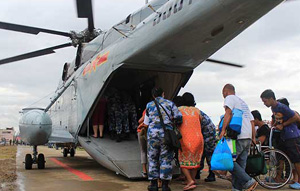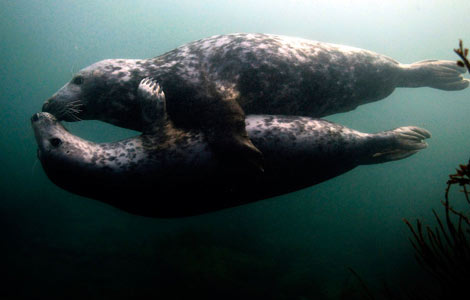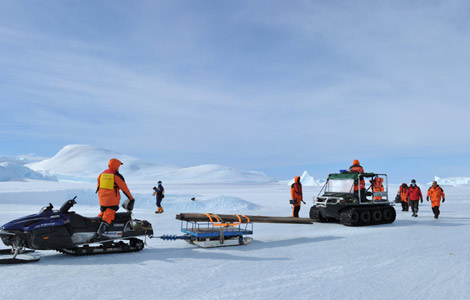'Can we survive after surviving?'
Updated: 2013-12-10 08:00
By Peng Yining (China Daily)
|
|||||||||||
Editor's note: On Nov 21, the Chinese hospital ship Peace Ark sailed from Zhoushan port in Zhejiang province to help with disaster relief efforts in the Philippines in the wake of a devastating typhoon. China Daily reporter Peng Yining is aboard the vessel to provide regular updates on its progress.
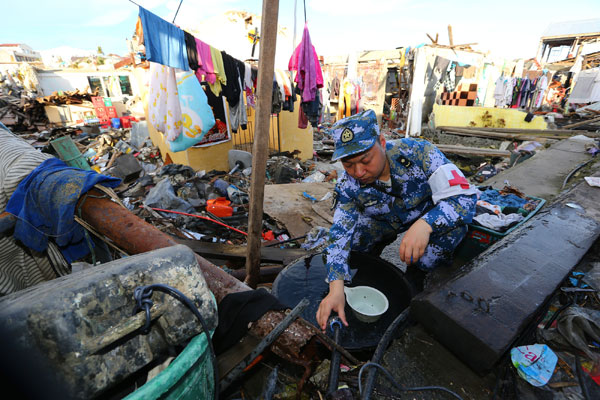 |
|
A member of the Peace Ark medical team collects water samples at a temporary shelter in Palo. Ju Zhenhua / for China Daily |
Though the floodwaters have receded, Philippine families under threat of disease, Peng Yining reports from Tacloban, Philippines.
Amonth after Typhoon Haiyan swept through the Philippines causing more than 5,000 deaths, Alipio Daga Jr, a 45-year-old construction worker in Palo, said the biggest problems facing the survivors are disease and a lack of clean drinking water.
Daga, whose home was close to the shoreline on the Gulf of Leyte, said the waves brought by the super typhoon engulfed his village and the water rose to his chest in just a few seconds. In desperation, he climbed the nearest coconut tree and held on for more than two hours.
"I climbed down as the water level fell gradually. When I finally stood on the land, I found the whole village had been wiped out," he said. "There was no one around. I thought everyone had died."
He later discovered that his 18-year-old son had been washed away in the flood and was found clinging to a coconut tree 1 km from their house. His wife and three daughters had also been rescued and sent to an evacuation center.
Now the family of six is living in the ruins of their home, which was turned into a swamp by the flood. The family trod the muddy ground in their bare feet, searching for any belongings that might have escaped the deluge, and iron sheeting to rebuild their home. Around 30 meters from the wooden board they were using as a dining table, a dead pig floated in a water-filled crater, covered in garbage. On the "table", the leftover food, mainly rice and relief biscuits donated by the Red Cross, was covered by flies. Daga said the relief teams were unable to give him enough bottled water. All the family's cooking pots had been washed away in the floods and so they had been drinking unboiled well water. Sleeping in the open has left two of the children with severe colds.
"Although I am obviously ecstatic that my family survived the disaster, the question now is: Can we survive after surviving?" asked Daga.
Prevention of epidemics is the most crucial task in the immediate wake of a disaster, said Cong Liming, the leader of Peace Ark's 13-strong epidemic prevention squad.
Comprising experts in infectious diseases, pest control and water quality, the squad is one of the best in China, according to Cong.
"In addition to providing medical services, the hospital ship has also been helping to improve public health in the disaster zone," he said.
Cong's squad visited Daga's shelter and helped to clear away the corpses of drowned animals. The team sterilized the area and sprayed pesticide to protect Daga's family and the 2,500 residents of a nearby village.
Between Nov 24 and Dec 8, the squad sprayed pesticide across an area of 38,200 square meters, sterilized 13,590 sq m, tested 27 water samples from 21 communities, and conducted epidemiological surveys on more than 7,000 people.
Mosquito invasion
Cora Dadizon, a 54-year-old villager and retired official from the local agriculture department, thanked Cong's team for the work it has carried out in her community.
"There are so many mosquitoes buzzing around us after the disaster that we can't sleep at night," she said, displaying the red marks on her arms.
Dadizon's house, one of the few buildings that survived, is providing temporary shelter for five families. The bodies of squashed mosquitoes lay everywhere.
"A lot of people are living in a limited space," she said. "I am worried about the diseases that could be transmitted by these pests."
Zhao Tongyan, a pest control expert at the Academy of Military Medical Sciences' Institute of Disease Control and Prevention, had been researching the situation in the disaster area since the Peace Ark arrived. She discovered that the density of mosquitoes is alarmingly high.
Zhao found mosquito larvae in every scoop of sample water she took from a pond near an evacuation center that houses more than 3,000 people. She also discovered that containers floating in the debris were infested with mosquitoes.
"See how happy the little black larvae are, swimming in the water? They love empty cans and garbage, and in the disaster area there are numerous containers," Zhao said. "Later they will become an army, carrying a range of diseases, including dengue fever."
In a 25-sq-m tent, Zhao and his colleagues caught and killed more than 2,000 mosquitoes.
Liu Keyang, a member of the epidemic prevention squad, said he counted and sexed the mosquitoes one by one using tweezers.
"The males have hairs on their heads, but the females don't. By sexing the mosquitoes, we can estimate the speed and scale of their population growth," he said. "We have sent the samples to a lab back in China to see if the mosquitoes were carrying diseases."
By providing repellents and spraying pesticides, Zhao's team managed to reduce the mosquito population in every area they visited.
"The pesticide we use is in line with the international standard and is nontoxic to humans," said Zhao. "Once a mosquito comes into contact with the pesticide, which is effective for around a month, it dies."
According to Zhao, the use of the pesticide is strictly regulated by the local authorities and the World Health Organization.
China is a member of the WHO, and so the Peace Ark's work has been conducted under the guidance of the WHO and the local health department. Zhao said the authorities are being kept fully up to fate with the results of the team's relief and monitoring work.
Dana Van Alphen, a WHO disaster management advisor, said she was impressed by the equipment the Chinese hospital ship carries. She expressed thanks for the medical services the Peace Ark has provided.
"I am glad that China sent an epidemic prevention team," she said. "We have more than 40 disaster relief organizations working in the Philippines, but only a few of them are capable of providing large-scale disease- and pest-control services, which are crucial right now."
Related Stories
Peace Ark answers call in typhoon-hit Philippines 2013-12-06 16:46
Typhoon-hit Philippines 2013-12-06 16:35
Chinese med teams start treatment in Philippines 2013-11-24 19:41
The aftermath of Typhoon Haiyan 2013-11-22 00:16
Today's Top News
Nuclear co-op a new front for China's diplomacy
More emission controls urged
GDP growth could hit 7.8% next year
Ripple effects of air pollution felt in many sectors
Alibaba, Haier set up joint venture
JP 'betrays' embargo on arms exports
Chinese VP to attend Mandela's funeral
China's coal output, sales stabilize in Oct
Hot Topics
Lunar probe , China growth forecasts, Emission rules get tougher, China seen through 'colored lens', International board,
Editor's Picks
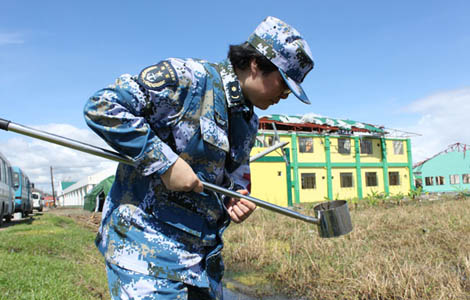
|
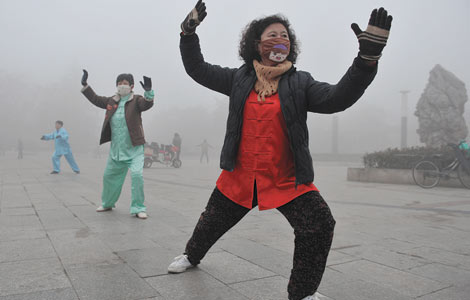
|
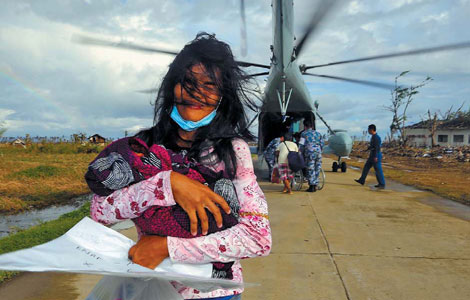
|

|

|
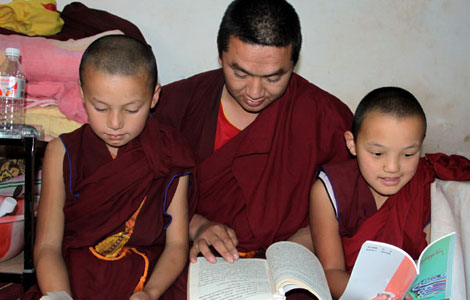
|

